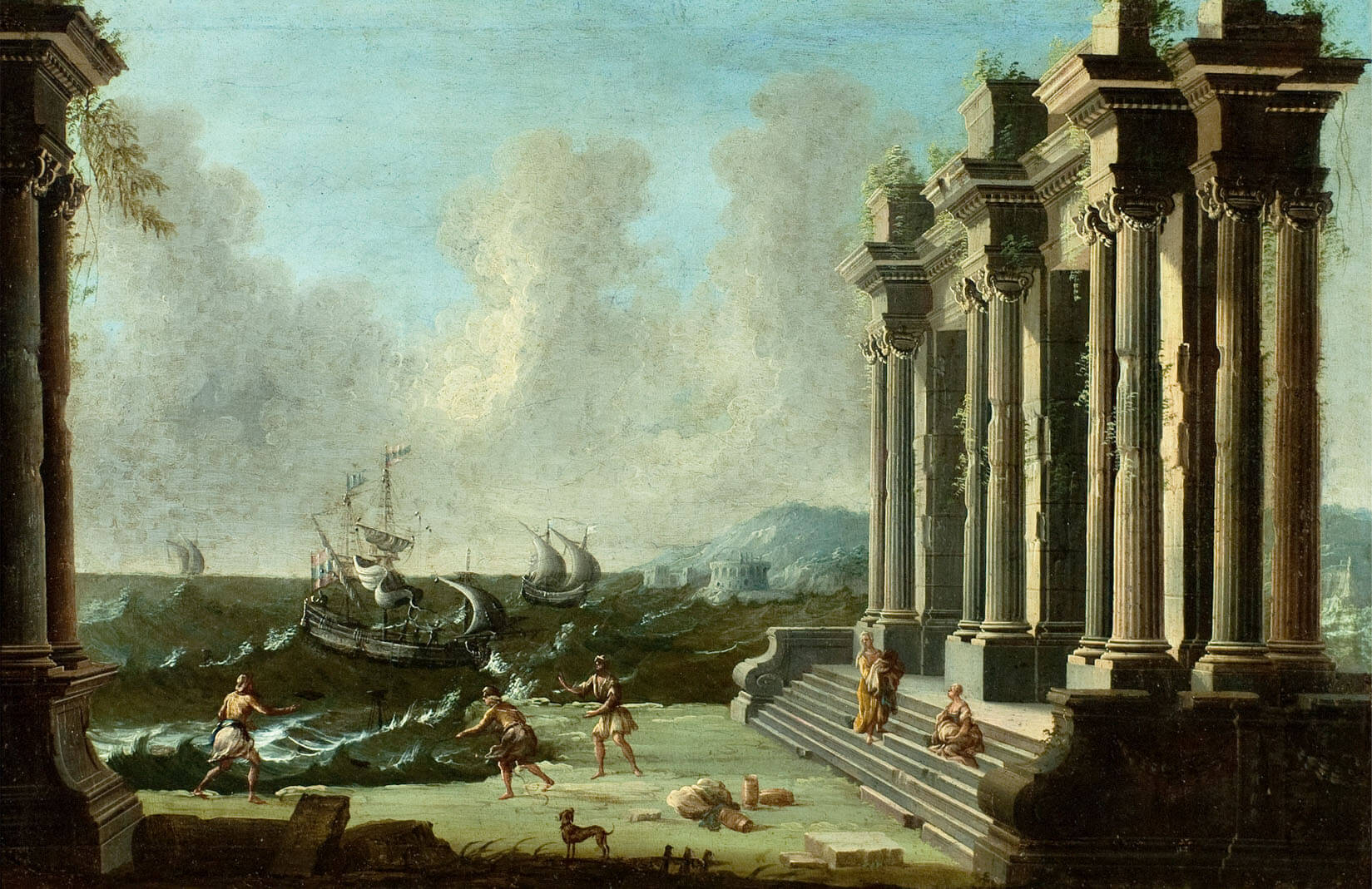Gennaro Greco
“il mascacotta”
naples 1663 – 1714 nola
capriccio with figures among classical ruins and ships beyond
50 x 76 cm., oil on canvas
- Literature
- Giancarlo Sestieri, Il Capriccio Architettonico: in Italia nel XVII e XVIII secolo, (2015), Rome, illus. Vol II, fig. 31, p. 212.
- SFO Airport Museum, All Roads Lead to Rome, (2017), illus. p. 80.
- Exhibition
- SFO Airport Museum, All Roads Lead to Rome: 17th-19th Century Souvenirs from the Collection of Piraneseum, January 24-August 13, 2017
“Gennaro’s paintings invented a variety of ruined Architecture and other magnificent constructions and made superb underground places and imaginary prisons with horrible appearances,” writes Bernardo de Domenici in his 1743 Vite de Pittore, Scultori, ed Architetti Napoletani.
Greco was highly esteemed in his lifetime. De Domenici titles a chapter “Notizie de Gennaro Greco … ,” with the painter’s name followed, in much smaller type, by a number of apparently lesser artists, including Leonardo Coccorante, whose star burns brightly today.
When a child, Greco’s face was horribly disfigured in a fire; for the rest of his life he was called Il Mascacotta – literally “he of the cooked face.” His biographer, however, notes several compensations. The apparently prosperous Greco had three young, beautiful wives, and a multitude of sons, including one, Vincenza, who became a painter.
A student of Andrea Pozzo’s 1693 treatise on architectural perspective – Perspectiva Pictorum et Architectorum – Greco’s earliest work involved painting ornament, temporary stages for religious celebrations, as well as perspectival frameworks for other artists’ figural projects.
Greco’s mature work, of which the example here is characteristic, focuses on very carefully rendered views of imaginary ruins – vedute ideate – often set by a bay with highly detailed ships and other structures beyond.
With the present picture, note the skillful manner in which the ruins are made lighter and lower contrast, as they recede into the distance enhancing the picture’s depth. Completing the effect are the distant fort and port structures, painted in purpley blues, emphasizing their distance from the foreground.
Note as well the vigorous, swirling rendering of the ships and waves on which they are tossed, typical expressions of motion in late Baroque painting.
In 1714, while at work on the vault of a country house chapel in Nola, near Naples, Greco fell from high scaffolding to his death.
Greco’s paintings are included in the collections of the Castle Sforzesco in Milan, Musee des Beaux Arts in Rouen, and Kronberg Castle, Denmark. Pictured in Giancarlo Sestiari’s 2015 Il Capriccio Architettonico: in Italia nel XVII e XVIII secolo, Rome: Vol II, figure 31, p. 212.





